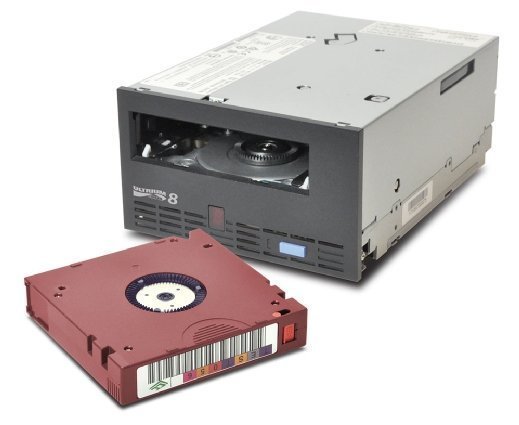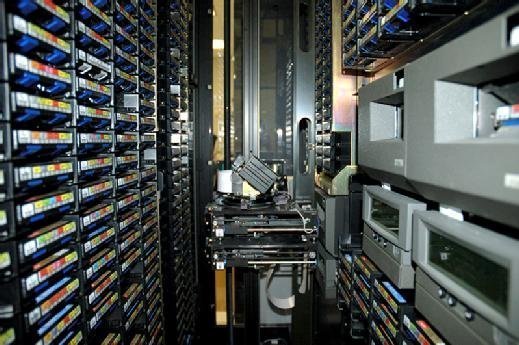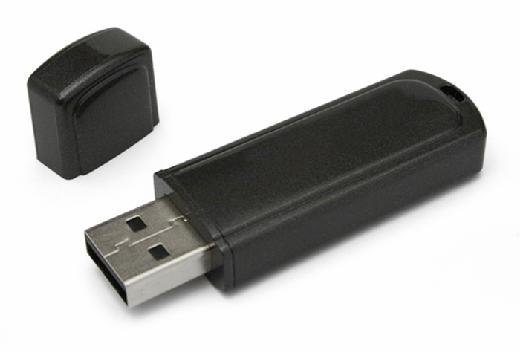external storage device
What is an external storage device?
An external storage device, also referred to as auxiliary storage and secondary storage, is a device that contains all the addressable data storage that is not inside a computer's main storage or memory.
An external storage device can be removable or nonremovable, temporary or permanent, and accessible over a wired or wireless network.
External storage enables users to store data separately from a computer's main or primary storage and memory at a relatively low cost. It increases storage capacity without having to open up a system.
External storage often stores information that's accessed less frequently by applications running on a desktop, laptop, server or mobile device, such as an Android or iOS smartphone or tablet.
For PCs, an external storage device often consists of stationary or portable hard disk drives (HDDs) or solid-state drives (SSDs), possibly attached through a USB or wirelessly.
For enterprises, an external storage device can serve as primary storage connected to servers through Ethernet or Fibre Channel switches, or as secondary storage for backup and archiving purposes. External storage offers HDD, all-flash and hybrid storage arrays for block-based, file-based or object storage, or a mix of these three protocols known as unified storage. Storage area networks (SANs) for block-level storage and network-attached storage (NAS) devices for file-based storage are examples of external storage.
Another common use case for an external storage device is to transport data between on-site and off-site computer systems.
When moving large amounts of data to the cloud, providers will often use external storage devices in a practice known as cloud seeding. Because moving tens of terabytes of data over a network can take hours or days, customers place their data on an external storage device and then send the device to their chosen provider to copy locally. After the initial seeding, only changed data will move across the network to the cloud for backup, archiving or disaster recovery (DR) purposes.
Pros and cons of external storage devices
External storage devices come in many forms, both removable and nonremovable. A shared characteristic is that they are non-volatile and data is stored outside the computer or multiple computers -- server, desktop, mobile and so on -- reading data from and writing data to them.

Common portable and fixed external storage devices include HDDs, a type of magnetic storage, and SSDs, which use flash technology with capacities starting in the gigabyte (GB) range to 10 terabytes (TB) and higher.
While the price of flash has fallen, comparable HDDs are still considerably cheaper to buy. Because there are no moving parts to flash SSDs, they are significantly faster and more durable than HDDs. External hard disks and flash drives are often used for data protection, backup, DR and long-term retention purposes.
Tape is another type of removable magnetic storage. The most prevalent tape format today is Linear Tape-Open (LTO). LTO specifications were developed by Hewlett-Packard (now Hewlett Packard Enterprise), IBM and Seagate Technology in 1997.
The first generation of LTO, LTO-1, supported a capacity of 200 GB compressed at a maximum compressed transfer rate of 40 megabytes per second (MBps). The latest generation, LTO-9, supports 45 TB at 1,000 MBps.

Because the price of HDDs has fallen while capacities have increased, hard disks have largely replaced tape as the main medium for backup. However, tape is still frequently used for archiving and DR because of its portability and ability to hold more data per cartridge.
Enterprises typically back up primary data to HDDs as one secondary storage tier, and then offload data to tape for long-term archiving and DR storage tiers, often using tape libraries with automated cartridge handling.

Another type of external storage device is optical storage, which writes and reads digital content using a laser. This category includes removable media, such as compact discs in formats such as CD-ROM, CD-R and CD-RW, which are basically defunct for computer storage purposes, as well as DVDs and Blu-ray discs.
While more durable than tape, optical storage is slower than hard disk. Optical libraries, also known as jukeboxes, greatly expand the utility of optical storage when it comes to long-term archiving and DR.
Small and removable USB flash drives and media cards for smartphones, tablets, cameras and so on are examples of portable and removable external storage devices in a small form factor.

While not a device per se, the cloud is another form of external storage used by enterprises -- for backup as a service, disaster recovery as a service, infrastructure as a service and storage as a service -- and individuals.
Among the most common and useful types of external cloud storage are file-sharing services, such as Box and Dropbox.
External storage vs. internal storage
Non-volatile external storage is typically lower performing and less costly than volatile internal storage -- also known as primary or main storage -- which holds data that is frequently accessed by a computer's processor and applications. An external storage device is also usually easier to add and support than internal storage because users don't need to physically open up a computer to add capacity or replace a drive.
Not all active or primary storage is internal, just as not all external and secondary storage consists of a device directly connected to a computer, such as the cloud or a storage array. For instance, in a tiered storage environment, primary storage might consist of transactional or mission-critical application data stored on HDDs and SSDs on a centralized NAS or SAN that delivers high performance.
Security and data protection
Because security and data integrity are of paramount importance to enterprises, organizations rarely deploy consumer-level, portable, external storage devices. Best security practices for enterprise-class external storage centers include data encryption and authentication.
Authentication protects data by ensuring external storage resources are only available to authorized users and trusted networks. Encryption secures data at rest on the external storage device itself and end-to-end as data is transmitted between external storage and the computer system or mobile device accessing that information.
Data backup and archiving are tools for protecting external storage data. It is especially important to have a backup available when data in an external storage device becomes corrupted due to a software failure, mechanical failure or virus.
Mirroring data to another storage device through techniques such as snapshots and RAID is another useful way to protect data against catastrophic loss should something happen to an external storage device and the data on it.
Editor's note: This article was revised in 2023 by TechTarget editors to improve the reader experience.





